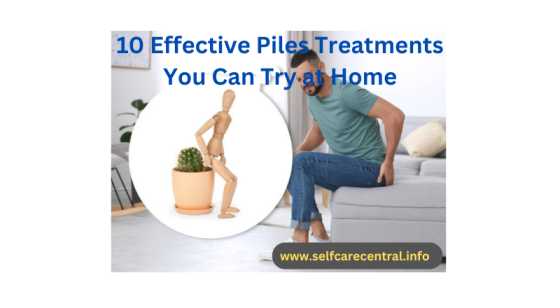1. Understanding Piles (Hemorrhoids)
1.1. What are hemorrhoids?
Hemorrhoids, commonly known as piles, are swollen veins in the lower part of your rectum and anus. They’re similar to varicose veins you might see on your legs. When these veins get irritated, they can cause discomfort and even pain.
1.2. Common causes of piles
Several factors can contribute to the development of hemorrhoids:
- Straining during bowel movements
- Sitting for long periods, especially on the toilet
- Chronic constipation or diarrhea
- Pregnancy
- Obesity
- Low-fiber diet
I remember when I first learned about hemorrhoids – I was surprised by how common they are! It’s estimated that about 75% of adults will experience them at some point in their lives.
1.3. Symptoms to watch out for
The symptoms of hemorrhoids can vary, but here are some common signs:
- Itching or irritation in your anal area
- Pain or discomfort
- Swelling around your anus
- Bleeding during bowel movements
- A lump near your anus, which may be sensitive or painful
Read more: 10 Simple Meditation Techniques for Beginners
2. Dietary Changes for Hemorrhoid Relief
2.1. Increasing fiber intake
One of the best ways to prevent and treat hemorrhoids is by increasing your fiber intake. Fiber helps soften your stool, making it easier to pass. Some high-fiber foods include:
- Whole grains
- Fruits like apples, pears, and berries
- Vegetables such as broccoli, carrots, and Brussels sprouts
- Legumes like beans and lentils
I’ve found that adding a handful of berries to my morning cereal makes a big difference in my digestive health.
2.2. Staying hydrated
Drinking plenty of water is crucial for maintaining soft stools and preventing constipation. Aim for at least 8 glasses of water a day. If you’re not a fan of plain water, try infusing it with fruits or herbs for added flavor.
2.3. Foods to avoid
Some foods can worsen hemorrhoids by causing constipation or irritation. It’s best to limit or avoid:
- Spicy foods
- Caffeine
- Alcohol
- Processed foods high in salt
3. Sitz Baths: A Soothing Solution
3.1. How to prepare a sitz bath
A sitz bath is a warm, shallow bath that cleanses the perineum, which is the area between your rectum and vulva or scrotum. Here’s how to prepare one:
- Fill a clean bathtub with about 3-4 inches of warm (not hot) water.
- Sit in the bath, making sure your anal area is covered.
- Relax and soak for 10-15 minutes.
3.2. Optimal duration and frequency
For best results, try to take a sitz bath 2-3 times a day, especially after bowel movements. Each session should last about 10-15 minutes.
3.3. Adding Epsom salt for enhanced benefits
Adding Epsom salt to your sitz bath can help reduce inflammation and provide extra relief. Add about 1-2 tablespoons of Epsom salt to your bath water and stir until dissolved.
4. Topical Treatments
4.1. Over-the-counter creams and ointments
There are several over-the-counter treatments available for hemorrhoids:
- Hydrocortisone creams to reduce inflammation
- Lidocaine ointments for pain relief
- Combination products that address multiple symptoms
4.2. Natural alternatives: Witch hazel and aloe vera
If you prefer natural remedies, witch hazel and aloe vera can be effective:
- Witch hazel has astringent properties that can help shrink swollen blood vessels.
- Aloe vera has anti-inflammatory properties and can soothe irritation.
I personally find witch hazel pads very soothing when I’m dealing with hemorrhoid discomfort.
4.3. Proper application techniques
When applying any topical treatment:
- Clean the area gently with warm water and pat dry.
- Apply a small amount of the product to your finger or a cotton swab.
- Gently apply to the affected area.
- Wash your hands thoroughly afterwards.
5. Cold Therapy for Instant Relief
5.1. Using ice packs safely
Cold therapy can help reduce swelling and numb pain. To use an ice pack:
- Wrap a gel ice pack or bag of frozen peas in a soft cloth.
- Apply to the affected area for 15-20 minutes at a time.
- Repeat every 1-2 hours as needed.
Never apply ice directly to your skin, as it can cause damage.
5.2. Cold compress alternatives
If you don’t have an ice pack, you can make a cold compress by soaking a clean cloth in cold water and applying it to the area.
5.3. Combining cold therapy with other treatments
Cold therapy works well in combination with other treatments. For example, you might use a cold compress after a sitz bath for extra relief.
6. Herbal Remedies
6.1. Tea tree oil for its anti-inflammatory properties
Tea tree oil has natural anti-inflammatory and antiseptic properties. To use:
- Mix a few drops of tea tree oil with a carrier oil like coconut oil.
- Apply the mixture to the affected area with a cotton ball.
- Leave on for a few minutes, then rinse off.
Always do a patch test first to check for any allergic reactions.
6.2. Chamomile tea bags as a natural remedy
Chamomile can help reduce inflammation and provide relief. Here’s how to use it:
- Steep a chamomile tea bag in hot water for a few minutes.
- Remove the tea bag and let it cool in the refrigerator.
- Apply the cooled tea bag to the affected area for 10-15 minutes.
6.3. Butcher’s broom supplement
Butcher’s broom is an herb that may help improve circulation and reduce swelling. It’s available as a supplement, but always consult with your doctor before starting any new supplements.
7. Exercise and Movement
7.1. Kegel exercises for hemorrhoid prevention
Kegel exercises can help strengthen the muscles around your anus and lower rectum. Here’s how to do them:
- Tighten your pelvic floor muscles (as if you’re trying to stop urinating midstream).
- Hold for 5 seconds, then relax.
- Repeat 10-15 times, 3 times a day.
7.2. Light cardiovascular activities
Regular, gentle exercise can help prevent constipation and reduce pressure on the veins. Try activities like:
- Walking
- Swimming
- Cycling
I find that a short walk after meals helps keep my digestion regular.
7.3. Yoga poses that may help
Certain yoga poses can help improve circulation and reduce hemorrhoid symptoms:
- Child’s pose
- Legs-up-the-wall pose
- Wind-relieving pose
Remember to listen to your body and stop if you feel any pain or discomfort.
8. Improving Bowel Habits
8.1. Proper toilet posture
Believe it or not, how you sit on the toilet can affect your hemorrhoids. Try this:
- Use a small stool to raise your feet while on the toilet.
- This creates a squatting position, which can make bowel movements easier.
8.2. Avoiding straining during bowel movements
Straining can worsen hemorrhoids. To avoid this:
- Don’t force it if you’re not ready.
- Try to relax and give yourself enough time.
- Use gentle breathing techniques to help move things along.
8.3. The importance of regularity
Establishing a regular bowel routine can help prevent constipation and reduce hemorrhoid symptoms. Try to:
- Go to the bathroom at the same time each day.
- Don’t ignore the urge to have a bowel movement.
- Spend only the necessary amount of time on the toilet.
9. Lifestyle Adjustments
9.1. Maintaining a healthy weight
Excess weight can put pressure on the veins in your rectum and anus. Maintaining a healthy weight through a balanced diet and regular exercise can help prevent and manage hemorrhoids.
9.2. Wearing loose-fitting clothing
Tight clothing, especially around your waist and groin, can increase pressure and irritation. Opt for breathable, loose-fitting clothes when possible.
9.3. Managing stress levels
Stress can contribute to digestive issues and worsen hemorrhoid symptoms. Try stress-reduction techniques like:
- Deep breathing exercises
- Meditation
- Regular exercise
- Engaging in hobbies you enjoy
I’ve found that taking a few minutes each day for deep breathing really helps me manage stress.
10. Natural Supplements
10.1. Psyllium husk for added fiber
Psyllium husk is a natural fiber supplement that can help soften stools and make them easier to pass. Start with a small amount and gradually increase to avoid bloating.
10.2. Flavonoids to strengthen vein walls
Flavonoids are compounds found in many fruits and vegetables that can help strengthen vein walls. You can find flavonoid supplements, or increase your intake of flavonoid-rich foods like:
- Berries
- Citrus fruits
- Dark leafy greens
10.3. Probiotics for digestive health
Probiotics can help maintain a healthy gut, which may indirectly help with hemorrhoid symptoms. You can find probiotics in:
- Yogurt
- Kefir
- Sauerkraut
- Supplement form
As always, consult with your doctor before starting any new supplements.
Summary
Dealing with hemorrhoids can be uncomfortable, but there are many home remedies that can provide relief. From dietary changes and sitz baths to herbal treatments and lifestyle adjustments, you have numerous options to try. Remember, consistency is key when it comes to managing hemorrhoids. If your symptoms persist or worsen, don’t hesitate to consult a healthcare professional.
Frequently Asked Questions
1. How long do hemorrhoids typically last?
The duration of hemorrhoids can vary. Small hemorrhoids might clear up on their own in a few days, while larger ones can take several weeks. With proper care and treatment, most hemorrhoids improve significantly within a week or two.
2. When should I see a doctor about my hemorrhoids?
You should consult a doctor if:
- Your symptoms don’t improve after a week of home treatment
- You experience severe pain or bleeding
- You develop a fever along with hemorrhoid symptoms
- Your hemorrhoids are interfering with your daily life
3. Can hemorrhoids come back after treatment?
Yes, hemorrhoids can recur even after successful treatment. That’s why it’s important to maintain good habits like a high-fiber diet, regular exercise, and proper toilet habits to prevent them from coming back.
4. Are there any preventive measures for hemorrhoids?
Absolutely! Some preventive measures include:
- Eating a high-fiber diet
- Staying hydrated
- Exercising regularly
- Avoiding straining during bowel movements
- Not sitting for long periods, especially on the toilet
5. Is surgery ever necessary for hemorrhoids?
While most hemorrhoids can be treated at home, in some cases, surgery might be necessary. This is typically considered for large, persistent hemorrhoids that don’t respond to other treatments. Your doctor can advise if surgical options like hemorrhoidectomy or rubber band ligation are appropriate for your situation.


